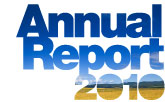We hereby list the most prominent documents from these initiatives:
- In early March, the European Commission approved the second instalment of the 4,000 million euro package, part of the economic recovery package allocated for 43 gas and electricity infrastructure projects.
The EC’s decision awarded 910 million euros to twelve electrical interconnection projects and 1,390 million euros to 31 gas transmission projects. The EC will co-finance up to 50% of the investment these projects require, over one and a half years. Support for bi-directional flow projects, supply security within the EU and import diversification (aid for new terminals, the Nabucco and Galsi projects, reinforcing the French natural gas pipelines for the Africa-Spain-France connection and the Larrau interconnection) figure among the projects that will receive aid.
- The EU Council issued a regulation Proposal concerning measures to safeguard the security of the natural gas supply on 12 March 2010. Following the European Parliament’s approval, on 12 November, the OJEU published Regulation (EU) No. 994/2010 of the European Parliament and the Council concerning measures to safeguard the security of the gas supply, thereby repealing Directive 2004/67/EC.
This Regulation means that natural gas companies and their customers can rely on the gas supply for the greatest amount of time possible, in the event the supply is disrupted. It also covers emergency mechanisms in the event the markets are unable to resolve the supply disruptions.
Each State must present a preventative plan of action and an emergency plan no later than 3 June 2012. The aforementioned plans must be published and the Commission notified no later than 3 December 2012.
Variables to bear in mind include: interconnections, cross-border access, storage facilities, physical capacity and public service requirements. Prior to 13 December 2013, transmission network operators must adapt the way the transmission systems operate, in part or in full, in order to allow for physical bi-directional flows.
- Commission Decision, which modifies part 3 of Appendix I from Regulation (EC) No. 715/2009 on conditions for accessing the natural gas transmission networks. OJEU 11.11.2010
The content of the Decision published in the OJEU improves the Regulation it modifies. The content of these two documents establishes guidelines to define the technical information needed to allow public natural gas network users to access the system effectively. However, the second (the aforementioned Decision) introduces a larger number of informational requirements, in an effort to achieve transparency, which aim to ensure equal market access conditions.
- Commission notification for the European Parliament, and Council, among others, Energy infrastructure priorities for 2020 and subsequent years. A proposal to integrate Europe’s energy networks.
These projects of “European interest” span seven primary objectives, four of which cover electricity grids and three of which pertain to natural gas pipelines. Integrating the Baltic’s electrical market with the rest of the EU and strengthening Central and Southeast Europe’s regional electricity grid are another two electricity priorities. The EU’s main objectives in terms of gas infrastructures include the southern natural gas pipeline, which will carry gas directly from the Caspian Sea and the Middle East, and connecting the Baltic region’s gas network with the rest of Europe. The Iberian Peninsula axis with France is also mentioned.
In 2010, ERGEG, the European Regulators’ Group for Electricity and Gas, continued its work to define recommendations for members and the Commission. By doing so, it aims to prevent congestion within the European network and standardise the national gas systems’ access systems and level of openness measurement systems, among others, with the idea of compiling the Agency’s requirements for Cooperation among Energy Regulators.
The European Gas Regulatory Forum met twice in 2010. This institution was created by the European Commission and held its first meeting in late 1999. The 17th and 18th meetings (14 and 15 January and 27 and 28 September) stressed those studies and proposals which could explore the process of standardising tariff schemes, access regulations and other aspects, in pursuance of moving toward the formation of a single market. Contributions and conclusions have aided the regulations proposed by the European Commission.


-
 ENDESA
ENDESA

